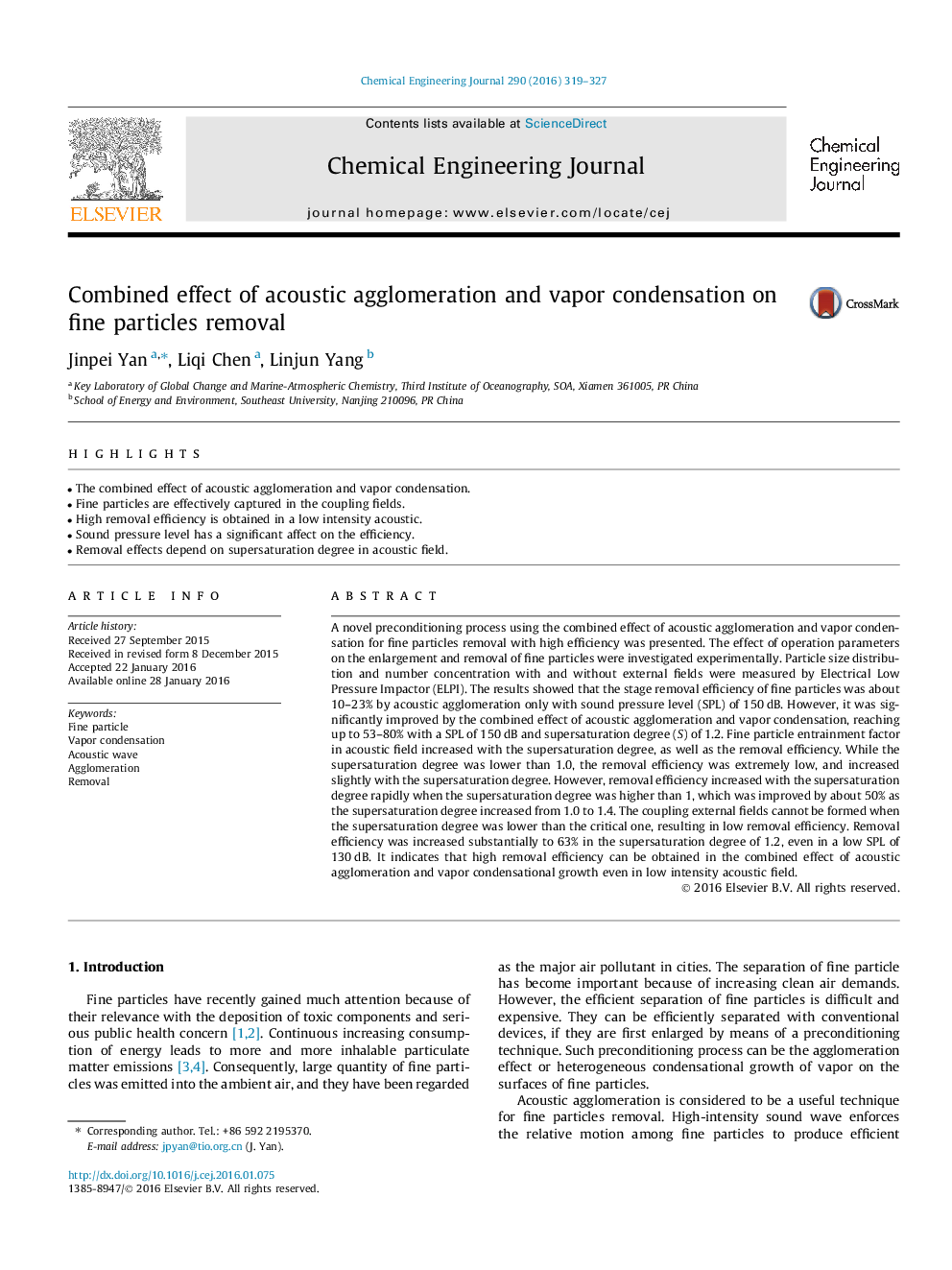| Article ID | Journal | Published Year | Pages | File Type |
|---|---|---|---|---|
| 145767 | Chemical Engineering Journal | 2016 | 9 Pages |
•The combined effect of acoustic agglomeration and vapor condensation.•Fine particles are effectively captured in the coupling fields.•High removal efficiency is obtained in a low intensity acoustic.•Sound pressure level has a significant affect on the efficiency.•Removal effects depend on supersaturation degree in acoustic field.
A novel preconditioning process using the combined effect of acoustic agglomeration and vapor condensation for fine particles removal with high efficiency was presented. The effect of operation parameters on the enlargement and removal of fine particles were investigated experimentally. Particle size distribution and number concentration with and without external fields were measured by Electrical Low Pressure Impactor (ELPI). The results showed that the stage removal efficiency of fine particles was about 10–23% by acoustic agglomeration only with sound pressure level (SPL) of 150 dB. However, it was significantly improved by the combined effect of acoustic agglomeration and vapor condensation, reaching up to 53–80% with a SPL of 150 dB and supersaturation degree (S) of 1.2. Fine particle entrainment factor in acoustic field increased with the supersaturation degree, as well as the removal efficiency. While the supersaturation degree was lower than 1.0, the removal efficiency was extremely low, and increased slightly with the supersaturation degree. However, removal efficiency increased with the supersaturation degree rapidly when the supersaturation degree was higher than 1, which was improved by about 50% as the supersaturation degree increased from 1.0 to 1.4. The coupling external fields cannot be formed when the supersaturation degree was lower than the critical one, resulting in low removal efficiency. Removal efficiency was increased substantially to 63% in the supersaturation degree of 1.2, even in a low SPL of 130 dB. It indicates that high removal efficiency can be obtained in the combined effect of acoustic agglomeration and vapor condensational growth even in low intensity acoustic field.
